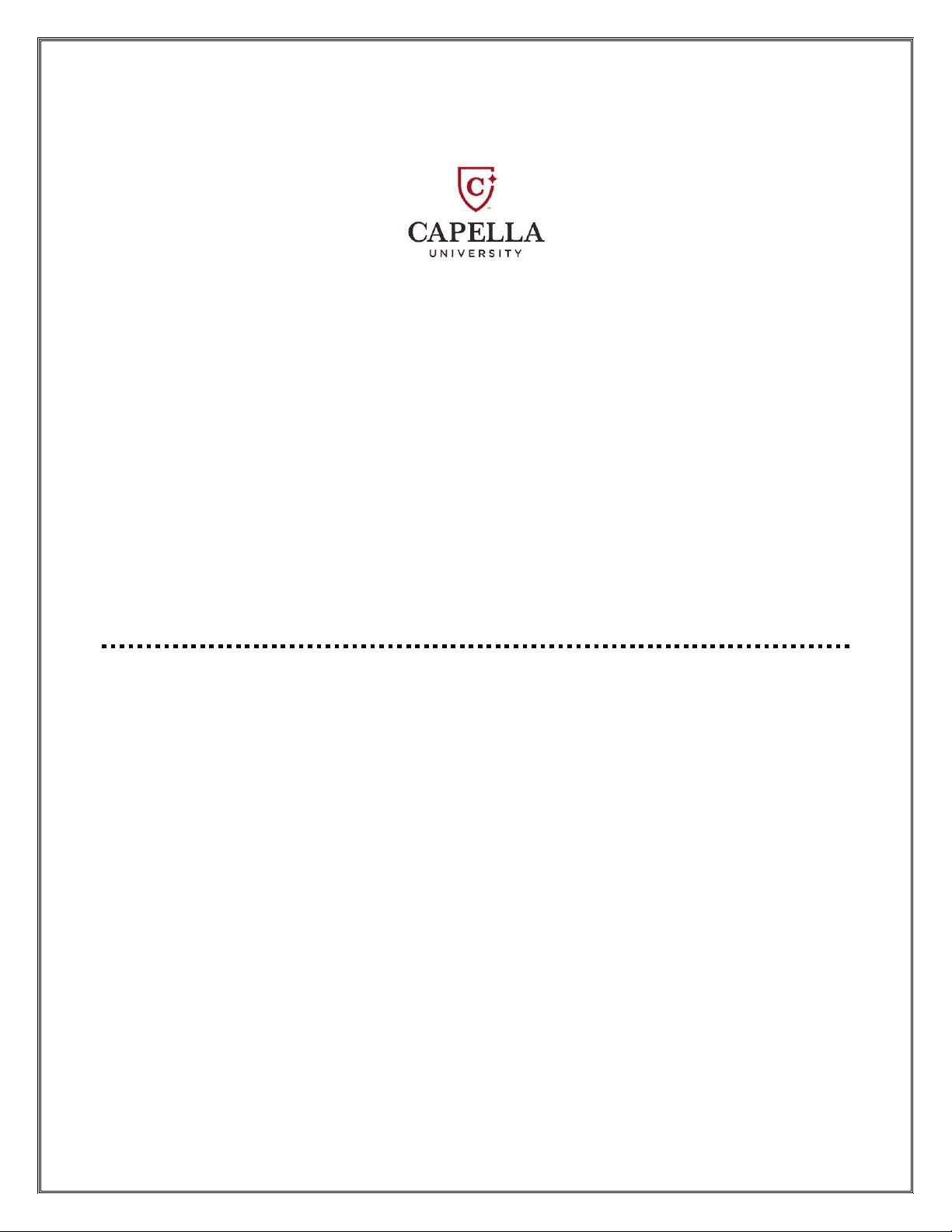
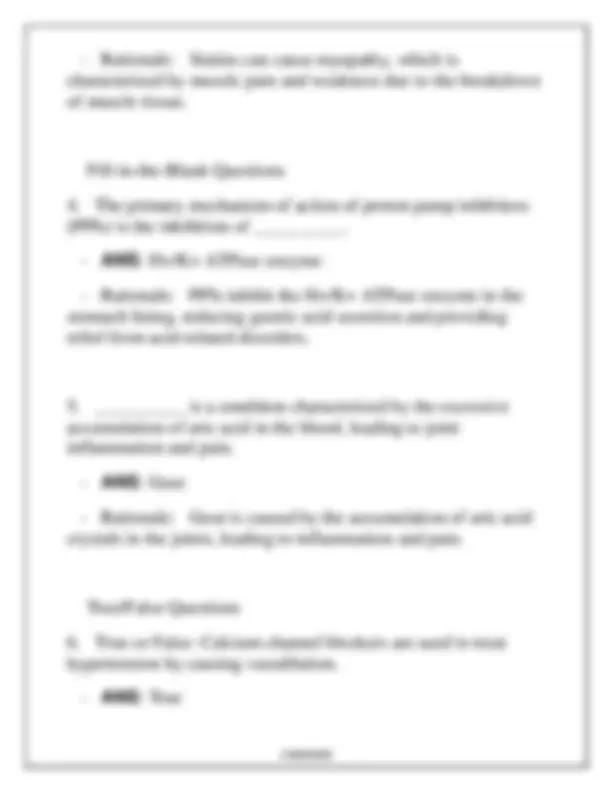
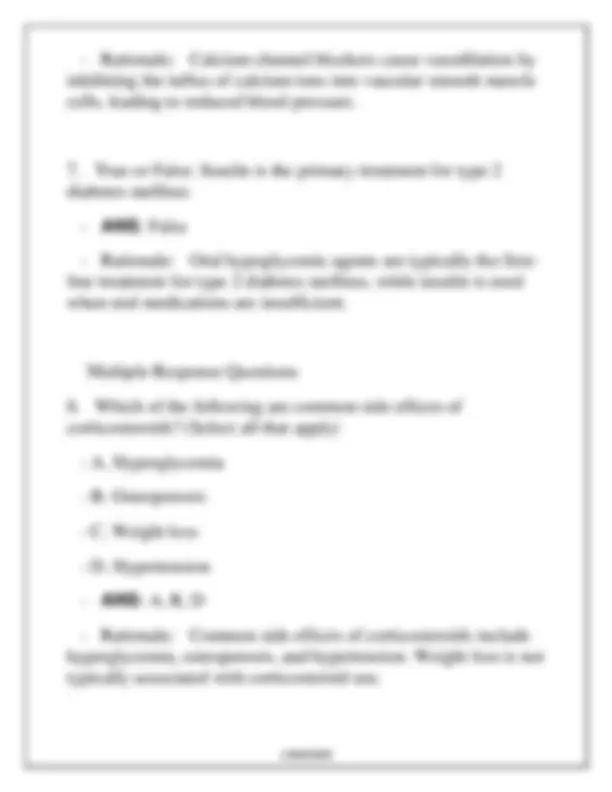
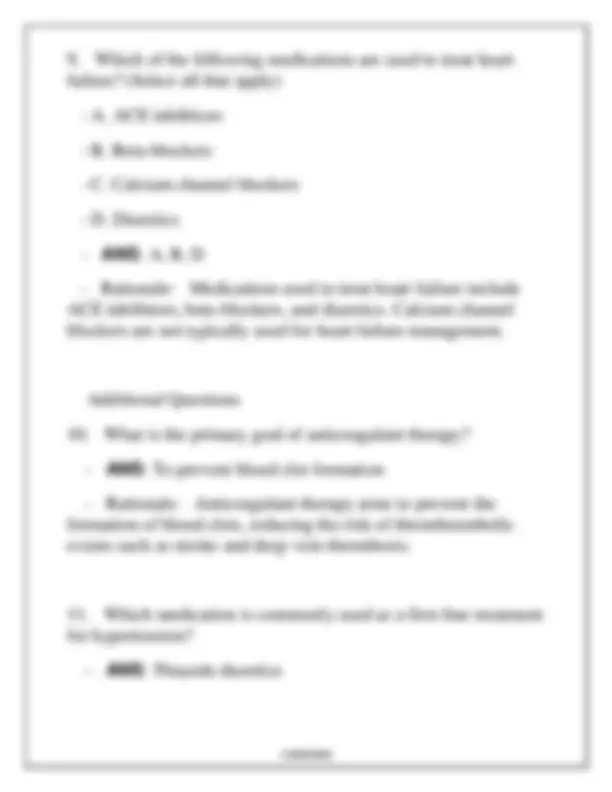
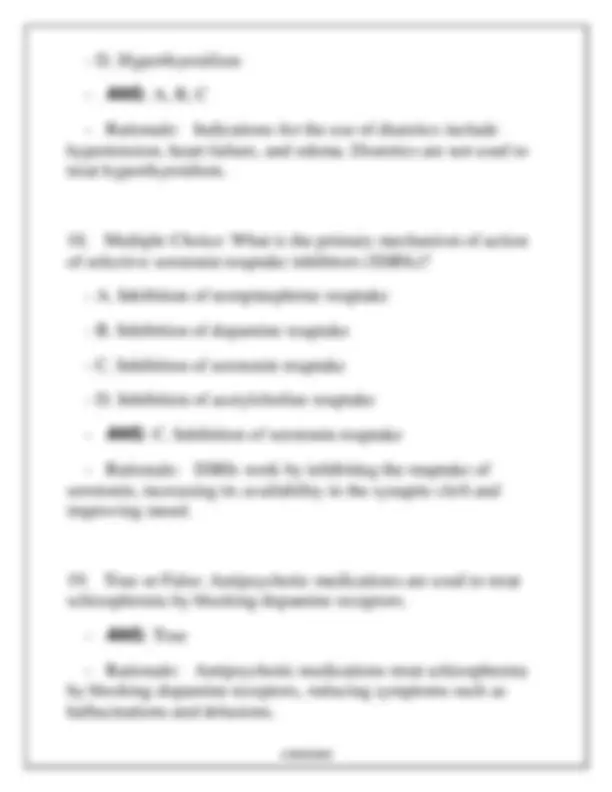
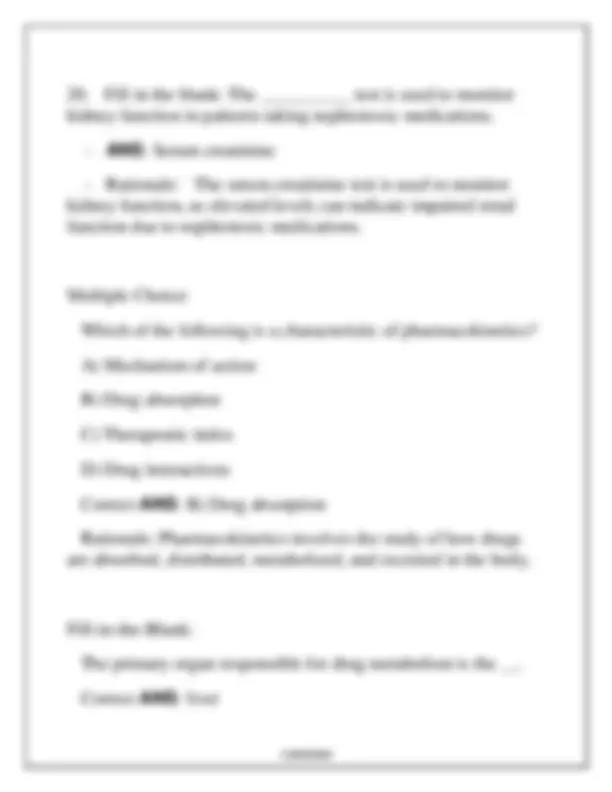
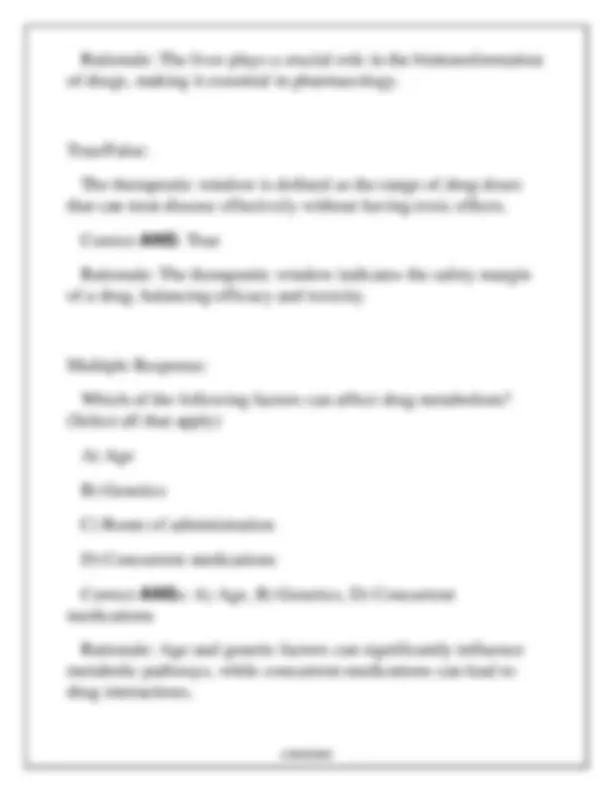
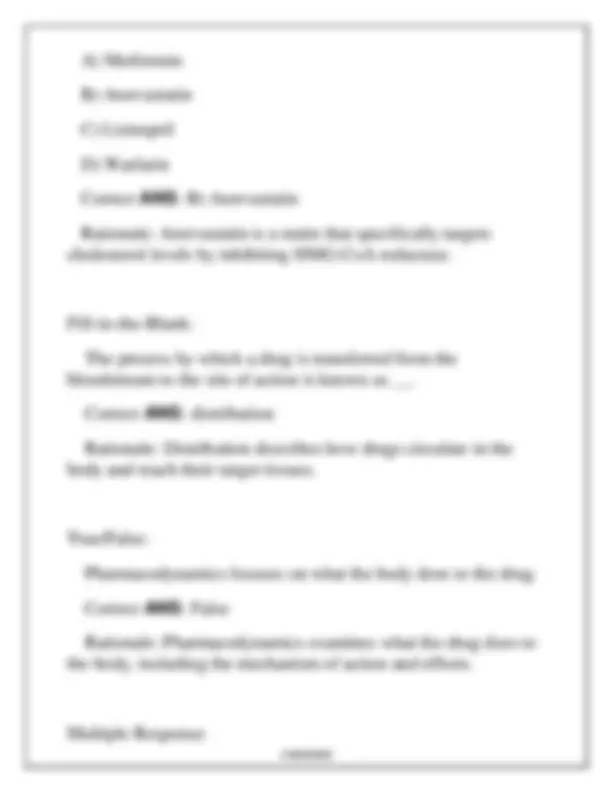
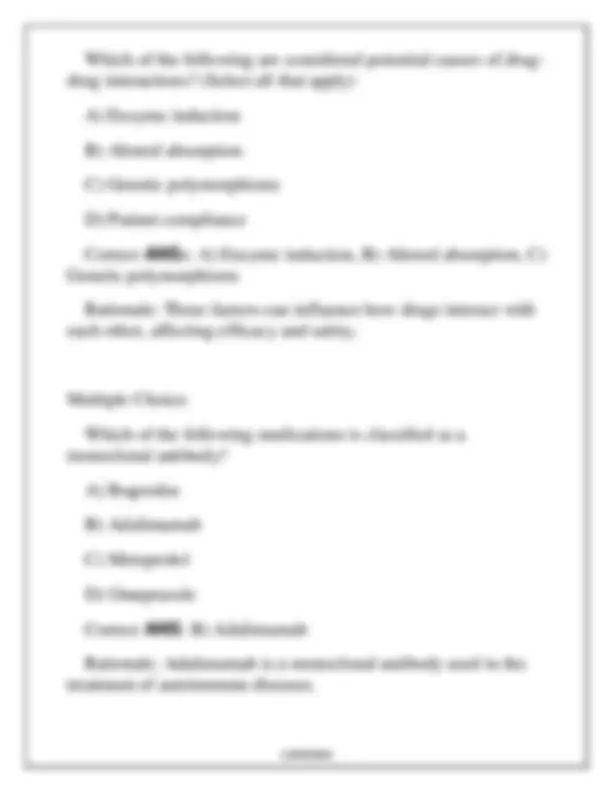
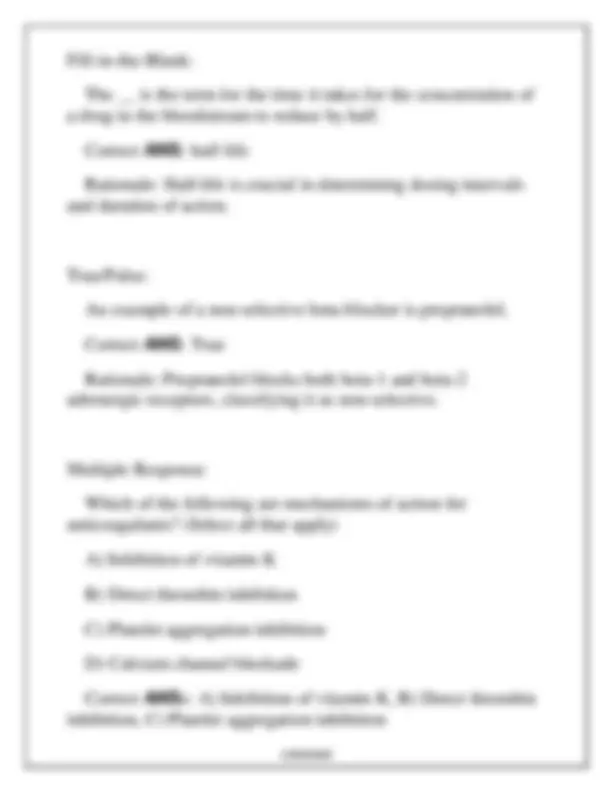
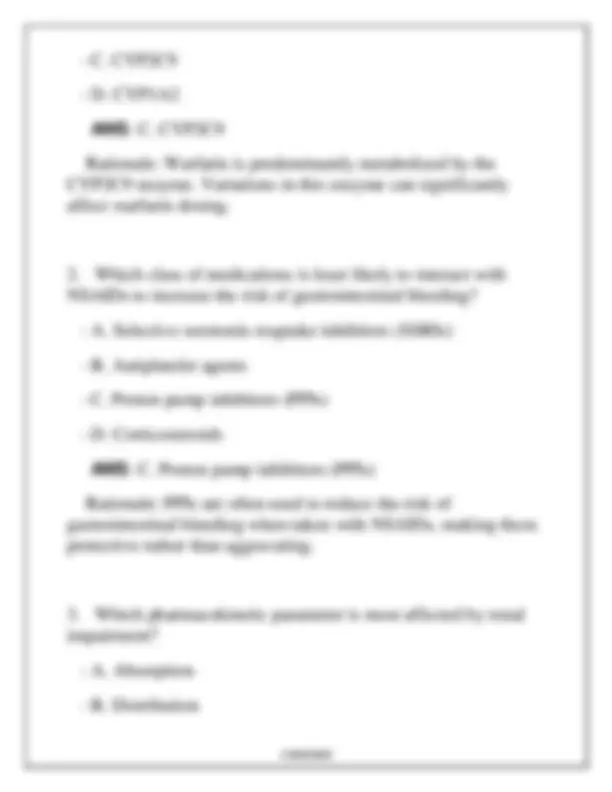

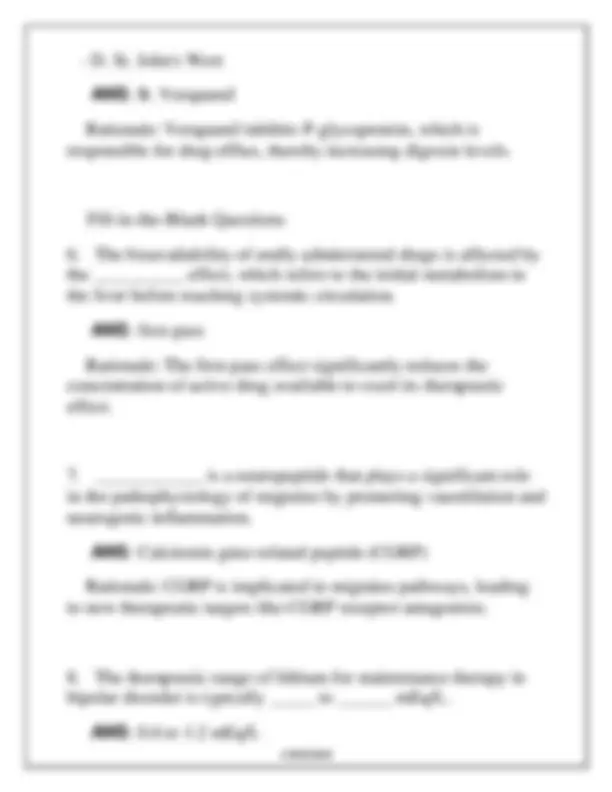
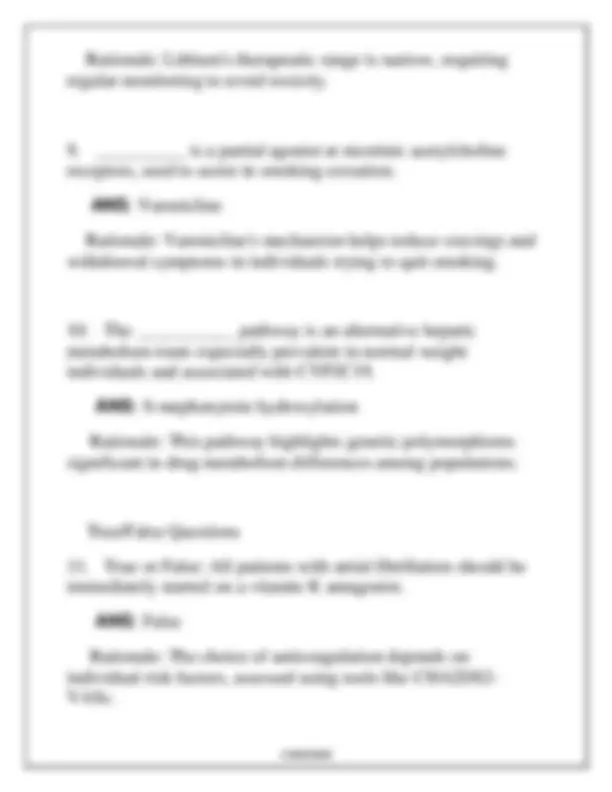
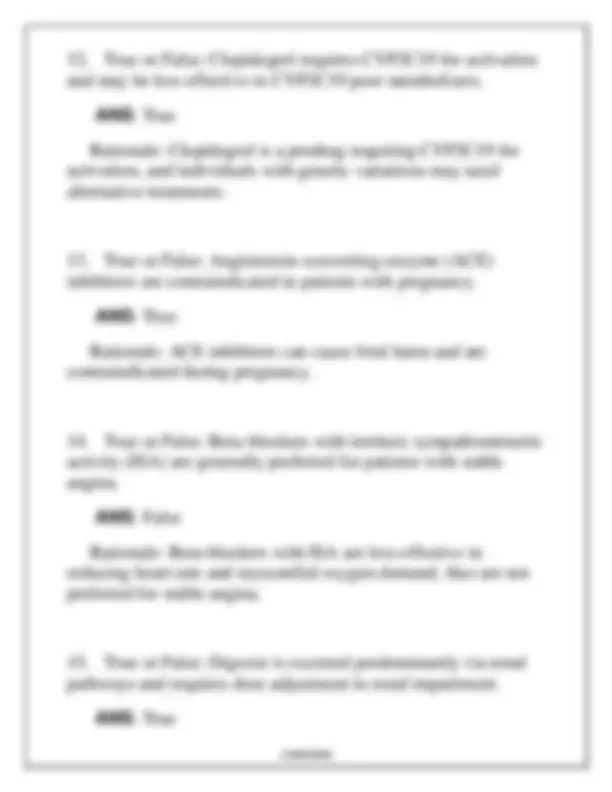
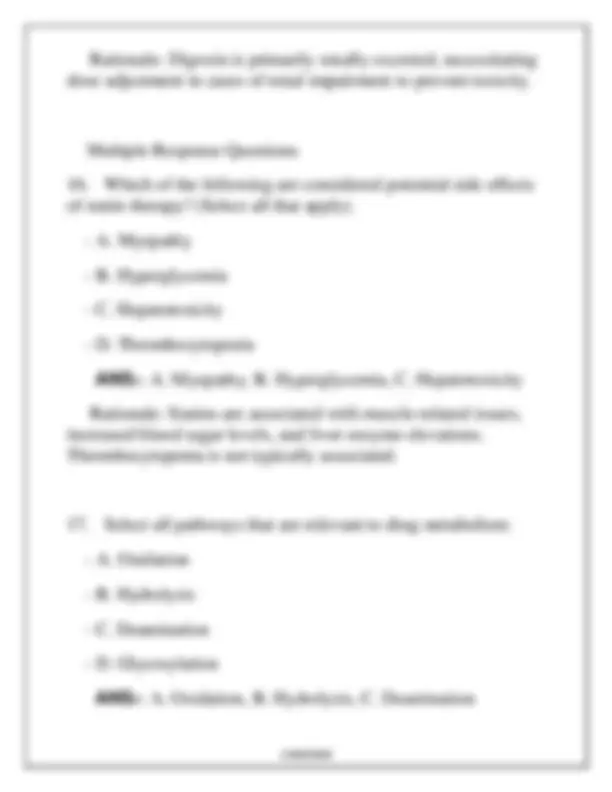
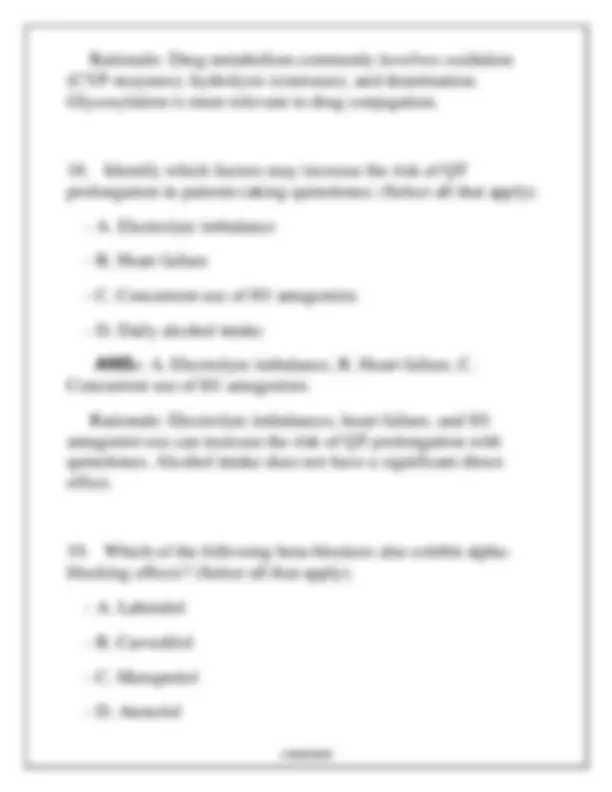
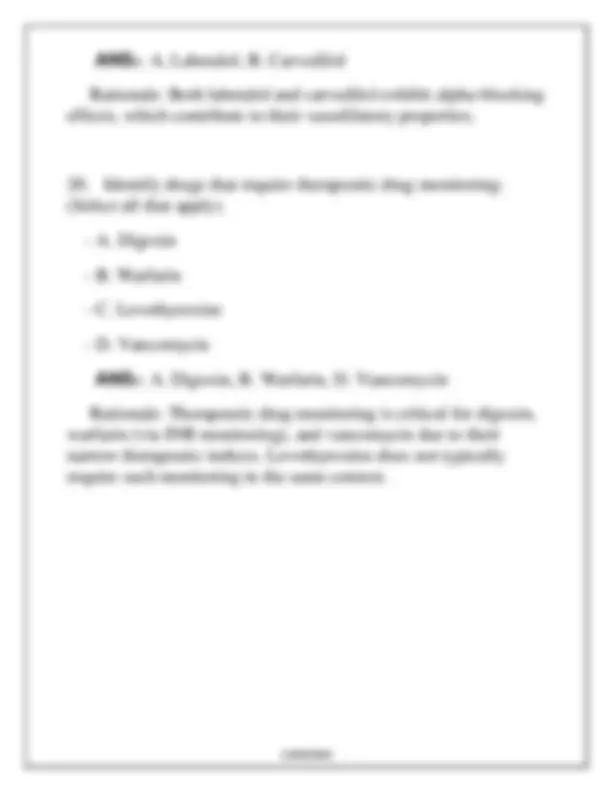


Study with the several resources on Docsity

Earn points by helping other students or get them with a premium plan


Prepare for your exams
Study with the several resources on Docsity

Earn points to download
Earn points by helping other students or get them with a premium plan
Community
Ask the community for help and clear up your study doubts
Discover the best universities in your country according to Docsity users
Free resources
Download our free guides on studying techniques, anxiety management strategies, and thesis advice from Docsity tutors
A comprehensive review of key concepts in advanced pharmacology, covering various drug classes and their mechanisms of action, therapeutic uses, side effects, and monitoring parameters. It includes multiple-choice, true/false, fill-in-the-blank, and multiple-response questions with answers and rationales, making it a valuable resource for students preparing for a midterm exam in advanced pharmacology.
Typology: Exams
1 / 25

This page cannot be seen from the preview
Don't miss anything!


















Rationale: The liver plays a crucial role in the biotransformation of drugs, making it essential in pharmacology. True/False: The therapeutic window is defined as the range of drug doses that can treat disease effectively without having toxic effects. Correct ANS : True Rationale: The therapeutic window indicates the safety margin of a drug, balancing efficacy and toxicity. Multiple Response: Which of the following factors can affect drug metabolism? (Select all that apply) A) Age B) Genetics C) Route of administration D) Concurrent medications Correct ANS s: A) Age, B) Genetics, D) Concurrent medications Rationale: Age and genetic factors can significantly influence metabolic pathways, while concurrent medications can lead to drug interactions.
Multiple Choice: The term “first-pass effect” refers to: A) The elimination of a drug after administration B) The reduction of drug concentration before it reaches systemic circulation C) The time taken for a drug to exert its effects D) The mechanism by which drugs are excreted Correct ANS : B) The reduction of drug concentration before it reaches systemic circulation Rationale: The first-pass effect occurs when drugs are metabolized in the liver before reaching systemic circulation, affecting their bioavailability. Fill-in-the-Blank: The __ receptor is a common target for many antidepressant medications. Correct ANS : serotonin Rationale: Many antidepressants, especially SSRIs, target serotonin receptors to increase serotonin levels in the synaptic cleft. True/False:
A) Metformin B) Atorvastatin C) Lisinopril D) Warfarin Correct ANS : B) Atorvastatin Rationale: Atorvastatin is a statin that specifically targets cholesterol levels by inhibiting HMG-CoA reductase. Fill-in-the-Blank: The process by which a drug is transferred from the bloodstream to the site of action is known as __. Correct ANS : distribution Rationale: Distribution describes how drugs circulate in the body and reach their target tissues. True/False: Pharmacodynamics focuses on what the body does to the drug. Correct ANS : False Rationale: Pharmacodynamics examines what the drug does to the body, including the mechanism of action and effects. Multiple Response:
Which of the following are considered potential causes of drug- drug interactions? (Select all that apply) A) Enzyme induction B) Altered absorption C) Genetic polymorphisms D) Patient compliance Correct ANS s: A) Enzyme induction, B) Altered absorption, C) Genetic polymorphisms Rationale: These factors can influence how drugs interact with each other, affecting efficacy and safety. Multiple Choice: Which of the following medications is classified as a monoclonal antibody? A) Ibuprofen B) Adalimumab C) Metoprolol D) Omeprazole Correct ANS : B) Adalimumab Rationale: Adalimumab is a monoclonal antibody used in the treatment of autoimmune diseases.
Rationale: Anticoagulants work through various mechanisms, such as inhibiting vitamin K, directly affecting thrombin, and preventing platelet aggregation. Multiple Choice: Which of the following agents is a common diuretic used in hypertension management? A) Furosemide B) Levothyroxine C) Simvastatin D) Metformin Correct ANS : A) Furosemide Rationale: Furosemide is a loop diuretic frequently prescribed for hypertension and fluid retention. Fill-in-the-Blank: __ is the phenomenon where the effect of a drug is diminished over time due to continuous exposure. Correct ANS : Tolerance Rationale: Tolerance can develop with prolonged drug use, requiring higher doses to achieve the same effect.
True/False: All antibiotics are effective against viral infections. Correct ANS : False Rationale: Antibiotics are designed to target bacterial infections and are ineffective against viruses. Multiple Response: Which of the following are common factors that influence drug adherence? (Select all that apply) A) Complexity of the regimen B) Cost of medication C) Patient education D) Age of the patient Correct ANS s: A) Complexity of the regimen, B) Cost of medication, C) Patient education Rationale: These factors significantly impact a patient's ability or willingness to adhere to prescribed medication regimens.